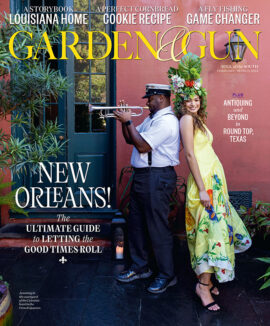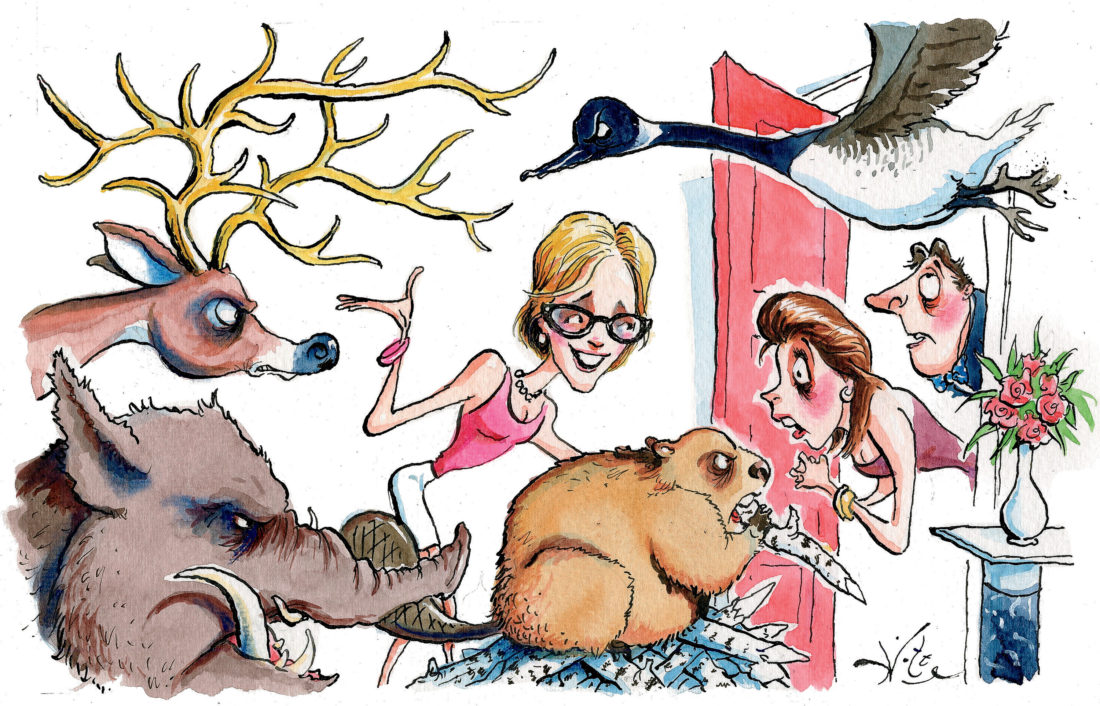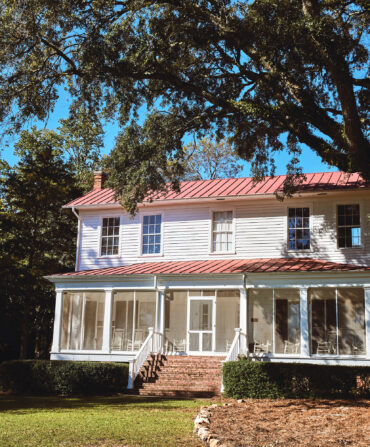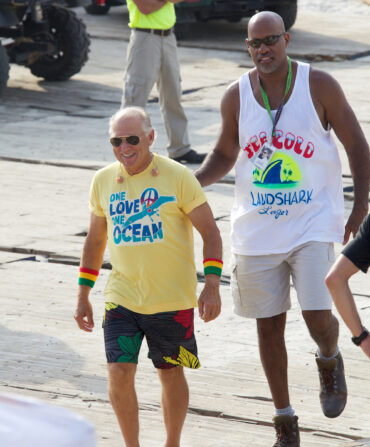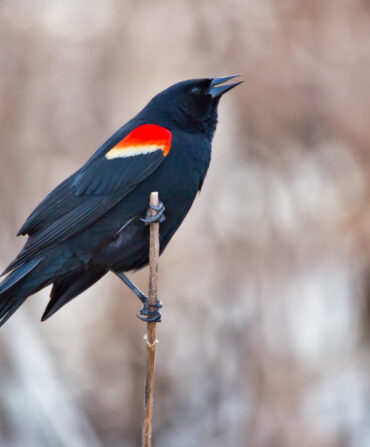A few weeks ago in New Orleans, I was at a benefit for historic houses when my dinner partner, a tiny bit bored with the proceedings at hand, started telling me all about a weekend he’d spent at a nearby farm. The room was loud and there was an auction going on, so when I heard him say something about deer and fences, I remarked as to how his host’s fence must be a hell of a thing in order to keep all those pesky deer out.
I’d just seen an episode of my new favorite TV show, Homeland, the one in which returning Marine/is-he-or-isn’t-he terrorist Damian Lewis takes his government-issue rifle and blows away a deer in his suburban D.C. backyard. The deer had made the mistake of munching on his wife’s flower beds—twice—and Lewis’s character is a tad on the jittery side. So I was thinking about that scene and how the deer might have made it if only those beds had been fenced in (which in turn led to a mini-reverie about an even more riveting episode in which Lewis and Claire Danes’s bipolar CIA agent have one of the most intense love scenes ever on TV or, for that matter, in the movies) when my companion brought me back to the reality of the ballroom: “No, no,” he said. “The fence is to keep the deer from getting out.”
Out? Oh yes, he said, the deer are specially bred does and bucks that originate from Texas, and they get a nice rich high-protein diet and wander around in a very pretty place surrounded by very tall fences. So now I was convinced that I really must be hearing wrong, because while I get the point of breeding, say, chickens, and I’m a big fan of a free-range bird’s superior meat, deer already range so freely that at least 1.5 million of them get hit by cars every year. A particularly memorable front-page photograph in my Mississippi hometown’s newspaper a few years back featured a buck jumping through the plate glass window of the local travel agency—the spring floods had driven a veritable herd of them in search of high ground, where they ranged right on up Main Street. I couldn’t imagine who in the world would think it necessary to—on purpose—breed any more of them and I said so.
When he responded with “It’s a guy thing,” I finally understood that the “farm” he visited does not have a thing to do with the quality of the venison or even how picturesque the whitetails happen to be. (I have a rich friend who once imported some extremely expensive and especially attractive European cows to her weekend place in Connecticut for the simple reason that they decorated the view.) It’s about the same thing guys have been hunting for—on pretty much every front—since time began: bigger and better racks.
At this point I was curious (and rude) enough to pull my iPhone from my evening bag. A quick search of “deer breeding” revealed that I was way behind the curve on the subject. In Texas alone the deer breeding business brings in almost $3 million a year. The first breeding operation that popped up, DeerStar, advertises “genetically improved” UltraDoes that are artificially inseminated with the semen from bucks with names like Gladiator’s Hammer and Ultimate Weapon, to produce the white-tailed version of Arnold Schwarzenegger back when he was all bulked up (and, by his own admission, on steroids), only with way bigger headgear.
Their progeny and thousands of others just like them are raised in pens (the babies get bottles, the adults probiotics) and then released on high-fenced ranches just before hunting season. Super Trophy Class bucks, usually created with semen from Northern deer that outweigh the local whitetails, have multi-pointed antlers that score as high as 300 inches—so big and bizarrely shaped that one disapproving outdoor columnist compared them to “mangrove swamps.” But he seems to be in the minority. At 4M Ranch, for example, the “philosophy” is “simple”: “Size Does Matter! Remember, if you want Big Whitetails, you must breed BIG ON BIG!”
The point of all this of course is that size sells. Hunters have been known to pay $10,000 (and in some cases an astonishing $100,000) to bag a super buck. Which is where the fences come in. You don’t want your potential gold mine to actually have a shot at getting away. Plus, when a buck is in possession of semen worth anywhere from $3,000 to $35,000 a pop, you can’t have him spreading it around just anywhere. On websites like DeerStar’s, bloodlines are traced further back than most racehorses’. Cloning is not unheard of.
DeerStar, whose motto is “Not just state of the art, the state of nature,” seems unaware of how much it is tampering with the latter. The owners claim instead to “have thought many things out in detail to make sure that what we do honors our creator,” which is the part where I always get nervous. It rarely ends well when a commercial enterprise (or a political candidate or Pat Robertson—whoever) claims to have an inside track on the wishes of our Lord. Also, I’m not at all sure how He might come down on the subject of dosing up “breeder does” with the sperm of genetically manipulated bucks who have names better suited to professional wrestlers and then charging people a bunch of money to take aim at their offspring. Still, folks persist. One embattled member of the industry told the Texas Deer Association, “Because I’m a deer breeder, sometimes I feel like I’m a Christian at an atheist rally.”
I should interject here that I am grateful for my many deer-hunting friends who manage to bag plenty of bucks the old-fashioned way. I make a mean venison chili and I am crazy for a deer head—in fact, I’m a huge fan of taxidermy in general. As I type, the mounted head of a wild boar is shedding all over my office mantel, upon which two stuffed birds from the great Paris taxidermy shop Deyrolle sit. Last year for Christmas, my thoughtful former assistant Bebe Howorth gave me a “basket” made from the body and tail of an armadillo, and one of my greatest regrets is that in a fit of pique at a particularly onerous ex-boyfriend, I got rid of the magnificent stag horns that were the only nice things he’d ever given me.
After I canceled a wedding (different boyfriend, a lot less onerous), my best friend Jessica and I decided to have a black-tie ball for all the people disappointed that they were no longer invited to the Mississippi Delta for the nuptials. The location was a falling-down antebellum mansion once owned by the family of Shelby Foote, and the theme was taxidermy. If you live in the right place, this is an extraordinarily inexpensive way to decorate for a party. All it took was a pickup and two Suburbans we filled with various trophies collected from friends and acquaintances, including a beaver munching on a log, an albino squirrel, and at least a half dozen raccoons and foxes. By the time we’d completed the twenty-mile drive from town to the party site, we’d gained a sizable—and very noisy—canine escort who’d followed us the whole way down the highway.
We suspended geese and ducks from the ballroom ceiling with fishing line and stuffed a bouquet of lilies into the mouth of a loggerhead turtle that doubled as a coffee table. A coiled rattlesnake presided over the bar, bobcats pounced on the mantels, and a hornet’s nest hung from the chandelier above the moss-covered dining room table. Among our own superstars was an entire stuffed deer that greeted guests just outside the front door, and a chair made of the legs, horn, and hide of an elk Jessica’s father had gone all the way to Gunnison, Colorado, to kill. (The chair had been his gift to the local Elks Lodge, whose members were vocally unhappy when we came to borrow it for the night—not because they were going to miss the chair, but because it required Bonnie the bartender to leave her post for less than five minutes while she held the door open for us, but I digress.)
Anyway, we also had a band with a height-challenged Cajun washboard player who did backflips across the stage and a brunch the next day on the banks of the Mississippi where Jessica’s sister Eden played the piano, and it remains one of the best parties either of us has ever given. The whole thing would have come off without a single hitch had we remembered to put the deer back inside the door before we left.
The deer belonged to the owner of a pawnshop who didn’t want to part with his handsome specimen, so it was for sale for what we thought then was the inflated price of something like five hundred or maybe even a thousand dollars. During the night, a dog had its way with the deer’s back leg, but we managed to locate an emergency taxidermist to repair the damage. Now I can’t believe we didn’t just buy the deer in the first place because I would give anything in the world—except, I hasten to add, anywhere between $10,000 and $100,000—to own him. Like every other white-tailed deer I’ve ever seen, he was very beautiful, but we had no idea how lucky we were that the dog had not chewed on someone’s UltraBuck. Perhaps I should take a moment to thank our Creator.

